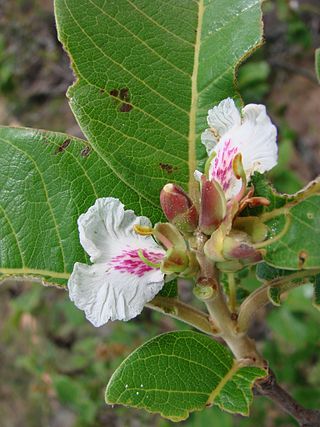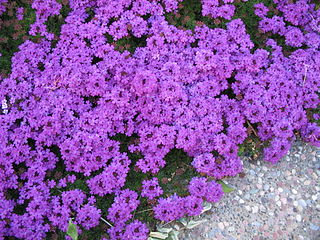
The International Union for Conservation of Nature (IUCN) Red List of Threatened Species, also known as the IUCN Red List or Red Data Book, founded in 1964, is an inventory of the global conservation status and extinction risk of biological species. A series of Regional Red Lists, which assess the risk of extinction to species within a political management unit, are also produced by countries and organizations.
Cypress is a common name for various coniferous trees or shrubs of northern temperate regions that belong to the family Cupressaceae. The word cypress is derived from Old French cipres, which was imported from Latin cypressus, the latinisation of the Greek κυπάρισσος (kyparissos). Cypress trees are a large classification of conifers, encompassing the trees and shrubs from the cypress family (Cupressaceae) and many others with the word cypress in their common name. Many cypress trees have needle-like, evergreen foliage and acorn-like seed cones.

Threatened species are any species which are vulnerable to extinction in the near future. Species that are threatened are sometimes characterised by the population dynamics measure of critical depensation, a mathematical measure of biomass related to population growth rate. This quantitative metric is one method of evaluating the degree of endangerment.

The conservation status of a group of organisms indicates whether the group still exists and how likely the group is to become extinct in the near future. Many factors are taken into account when assessing conservation status: not simply the number of individuals remaining, but the overall increase or decrease in the population over time, breeding success rates, and known threats. Various systems of conservation status are in use at international, multi-country, national and local levels, as well as for consumer use such as sustainable seafood advisory lists and certification. The two international systems are by the International Union for Conservation of Nature (IUCN) and The Convention on International Trade in Endangered Species of Wild Fauna and Flora (CITES).
Version 2014.2 of the IUCN Red List of Threatened Species identified 4574 Critically Endangered species, subspecies and varieties, stocks and subpopulations.

A least-concern species is a species that has been categorized by the International Union for Conservation of Nature (IUCN) as evaluated as not being a focus of species conservation because the specific species is still plentiful in the wild. They do not qualify as threatened, near threatened, or conservation dependent.
Tachigali tessmannii is a species of leguminous species of tree in the family Fabaceae. It is found only in Peru.
Barringtonia payensiana is a species of woody plant in the Lecythidaceae family. B. payensiana is endemic to Peninsular Malaysia and is threatened by habitat loss due to Housing & urban areas.

"Uzazi" is the Nigerian name for the 'prickly ash' tree of genus Zanthoxylum tessmannii / Fagara tessmannii / Zanthoxylum gilletii, a member of the Rutaceae family, native to Central and West Africa, and a close relative of the Sichuan pepper. It usually refers specifically to the spice made from its fruit and pericarp, though sometimes other parts of it such as its leaves are used.
Attalea tessmannii is a species of flowering plant in the family Arecaceae. It is found in Brazil and Peru. It is threatened by habitat loss.

Carpoxylon macrospermum is a species of palm tree endemic to Vanuatu, and the only species in the genus Carpoxylon.
Tectiphiala ferox, or palmiste bouglé, is a species of flowering plant in the family Arecaceae. It is endemic to Mauritius.

Helicia is a genus of 110 species of trees and shrubs, constituting part of the plant family Proteaceae. They grow naturally in rainforests throughout tropical South and Southeast Asia, including India, Sri Lanka, Indochina, Peninsular Malaysia to New Guinea and as far south as New South Wales.
Oxanthera brevipes is a species of plant in the family Rutaceae. It is endemic to New Caledonia. It was proposed as a novel species by Benjamin C. Stone based on two specimens, distinguished from other false oranges by a non-articulated petiole. The genus Oxanthera has been synonymized with Citrus, but a name in Citrus does not appear to have been published, and Plants of the World Online regards "Oxanthera brevipes" as an unplaced name.
Qualea calantha is a species of plant in the Vochysiaceae family. It is endemic to Peru.

Qualea is a flowering plant genus in the family Vochysiaceae. These plants occur in the Neotropics and their wood makes good timber and firewood and is used in construction. Some species of Qualea have medicinal properties.
Qualea impexa is a species of plant in the Vochysiaceae family endemic to Peru.
A Regional Red List is a report of the threatened status of species within a certain country or region. It is based on the IUCN Red List of Threatened Species, an inventory of the conservation status of species on a global scale. Regional Red Lists assess the risk of extinction to species within a political management unit and therefore may feed directly into national and regional planning. This project is coordinated by the Zoological Society of London, the World Conservation Union (IUCN) and partners in national governments, universities and organizations throughout the world.
On 29 January 2010, the IUCN Red List of Threatened Species identified 6,702 data deficient species.

Endangered plants of Europe, the list below contains plants that dwell in or migrate to any region in Europe and any nearby islands of the Atlantic Ocean. This includes plants that are found in the East Atlantic Ocean (Azores), Iceland, the Adriatic Sea, the Sea of Azov, the Black and Caspian Sea, Corsica, Cyprus, Palearctic, Russia, Eurasia, North African Coast, the Mediterranean Sea and islands located in the Mediterranean Sea, and the islands of Spain. As of 2007, twenty-one percent of Europe's vascular plant species are classified as threatened, according to the IUCN. The list below was compiled from data on the IUCN Red List of Endangered Species (IUCN) and "Earth's Endangered Creatures" (Online). The International Union for Conservation of Nature, identifies species in need of attention before approaching extinction and works to increase prevention of extinction. The list below includes vulnerable (VU), endangered (EN), critically endangered (CR), and recently extinct (EX) species.









